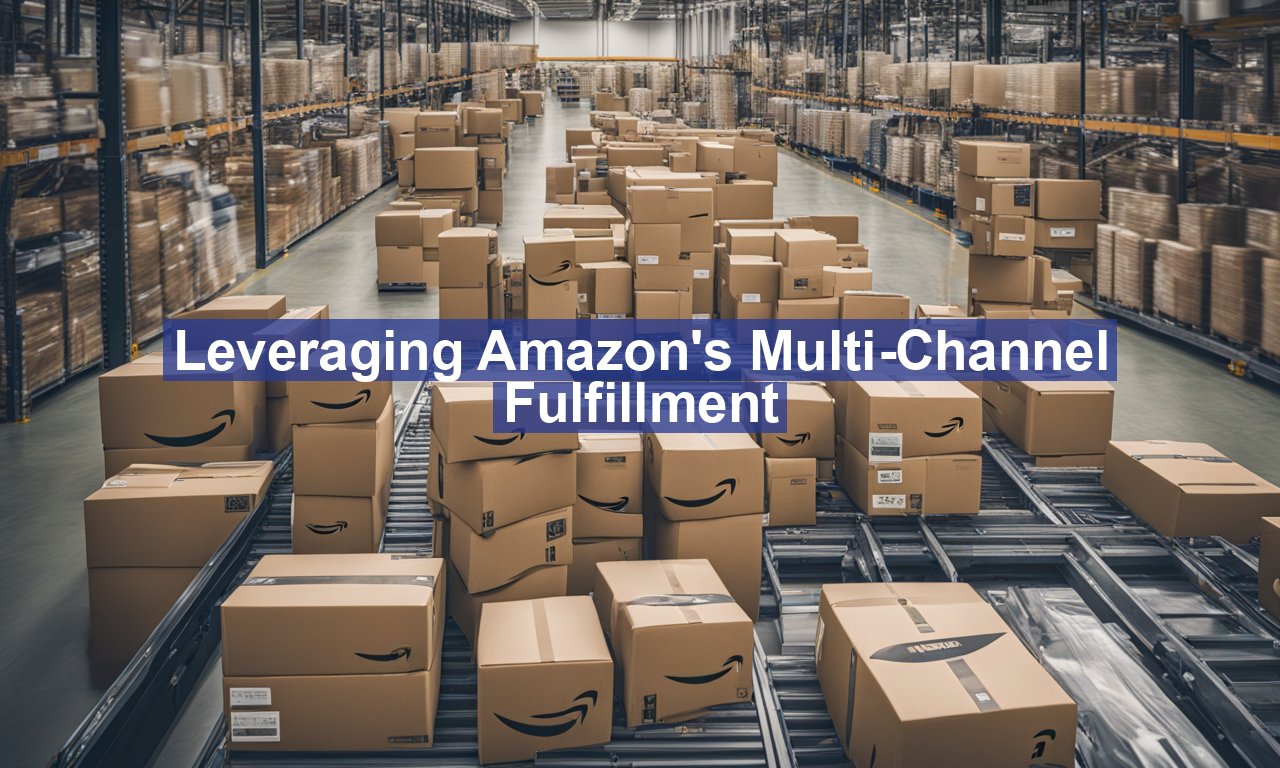Leveraging Amazon’s multi-channel fulfillment Imagine streamlining your business operations while simultaneously expanding your market reach—all without the hassle of managing separate fulfillment processes for different sales channels. Welcome to the world of Amazon‘s Multi-Channel Fulfillment (MCF), a service that promises to revolutionize how businesses handle logistics. Whether you’re an established enterprise or a burgeoning startup, unlocking the potential of Amazon’s robust logistics network can be a game changer.
In this article post, we’ll delve into the strengths of leveraging MCF, demystify common concerns, and provide you with practical insights to seamlessly incorporate this service into your business operations.
What is Leveraging Amazon’s Multi-Channel Fulfillment?
Leveraging Amazon’s multi-channel fulfillment is an extension of the Fulfillment by Amazon (FBA) service. But instead of only fulfilling orders from the Amazon marketplace, MCF takes it a step further by accommodating orders from various sales channels. Whether your sales come through your website, other online marketplaces, or even wholesale orders, MCF can manage these seamlessly, allowing you to ship products to customers efficiently with Amazon’s logistics prowess.
How Does It Work?
Here’s a simplified look at MCF’s operation:
- Integration: Connect your sales channels to Amazon MCF. This setup allows Amazon to receive order data directly from your systems.
- Inventory Management: Send your inventory to Amazon’s fulfillment centers. They store your products safely, ensuring quick dispatch once orders are received.
- Order Fulfillment: Once an order is placed, Amazon picks, packs, and ships the product using their extensive distribution network. They handle everything, including last-mile delivery, ensuring fast and reliable service.
Amazon’s logistic capabilities allow you to offer competitive shipping speeds, which can be a significant advantage in today’s fast-paced shopping environment.
Benefits of Leveraging Amazon’s MCF
Why should businesses consider using Amazon‘s MCF? Let’s explore some compelling reasons.
Efficiency and Scale
Amazon’s extensive and advanced fulfillment network is undoubtedly one of its strongest assets. By tapping into this, your business can achieve:
- Reduced Operational Load: By outsourcing your fulfillment tasks to Amazon, you free up valuable time and resources to focus on core business activities like product development and marketing.
- Predictable Costs: With straightforward pricing models, including storage and fulfillment fees, businesses can predict and manage costs more effectively.
- Scalability: MCF adapts to your business needs, whether you’re experiencing peak seasonal demand or steady growth over time.
Improved Customer Experience
Amazon is well-regarded for its customer-centric approach. MCF enables you to offer:
- Faster Delivery: Thanks to Amazon’s logistics, customers receive their orders quicker, enhancing satisfaction and customer loyalty.
- Reliable Service: Leverage Amazon’s reputation for timely and reliable deliveries, which can drastically reduce return rates and build trust with your customers.
- Comprehensive Tracking: Keep customers informed with Amazon’s tracking services, providing transparency and enhancing the shopping experience.
Concerns and Considerations
Before jumping in, it’s fair to ask, “Is MCF right for my business?” Here are some considerations:
Cost Implications
Amazon MCF comes with costs that could impact pricing strategies. However, the investment generally aligns with the scale and efficiency it brings. It is crucial to review Amazon’s cost breakdowns and calculate how these fit with your pricing models.
Branding and Packaging
One caveat with Amazon MCF is the limitation on customized packaging. Amazon ships your products mostly in its branded boxes, which might be a concern for some businesses prioritizing branding. Consider whether this aligns with your brand image or if adjustments in your marketing approach are needed.
Logistics and Returns
While Amazon handles fulfillment, businesses must ensure inventory levels are sufficiently maintained at Amazon’s centers. Also, familiarize yourself with Amazon’s returns policies and processes to effectively manage customer service and reverse logistics.
Getting Started with Amazon MCF
Jumping into Amazon MCF is straightforward but requires careful planning:
- Evaluate Your Current Fulfillment Process: Identify inefficiencies or areas of improvement within your current fulfillment processes.
- Forecast Demand: Accurate demand forecasting will ensure inventory levels are optimized, reducing the risk of stockouts or overstocking.
- Integrate Seamlessly: Make use of tools and software that integrate Amazon MCF with your eCommerce platforms to streamline operations.
This strategic step can greatly benefit businesses looking for efficient, scalable solutions to meet evolving customer expectations.
Your Next Step
Leveraging Amazon’s Multi-Channel Fulfillment might just be the secret ingredient to taking your business to the next level. It offers a way to harness Amazon’s logistical strengths while broadening your market involvement seamlessly. As you contemplate integration, consider your business’s unique needs, the customer experience you wish to deliver, and the growth targets you aspire to hit. With MCF, fulfilling these ambitions could be closer than you think. For further insights into optimizing your eCommerce strategies, check out this guide from the Forbes Tech Council.
In a rapidly evolving eCommerce landscape, Amazon’s MCF provides an invaluable efficiency boost that shouldn’t be overlooked. As logistics continue to shape the competitive playing field, being ahead with top-tier fulfillment services could well be your key to sustained success.


